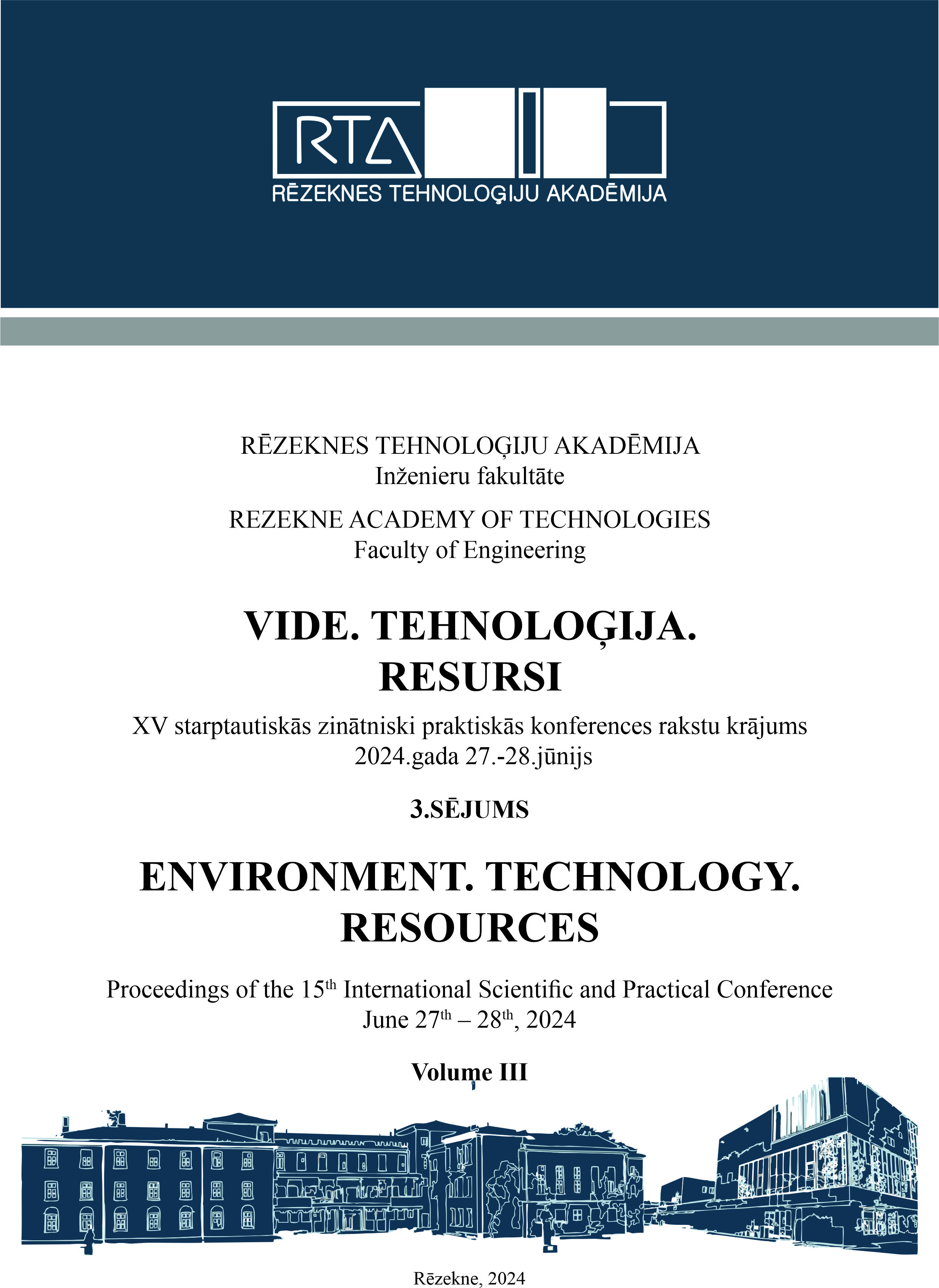TECHNICAL OBSTACLES TO SPEECH INTELLIGIBILITY
DOI:
https://doi.org/10.17770/etr2024vol3.8129Keywords:
communication equipment, speech intelligibility, technical characteristics, voiceAbstract
As voice communication increasingly rely on technological devices, understanding the intricate relationship between equipment properties and communication outcomes becomes imperative. The purpose of this study is to investigate the impact of technical condition of communication equipment on the intelligibility of voice communications. To achieve this goal, methods and results of a qualitative analysis of the voice signals were used, as well as statistical methods for establishing the relevant dependencies. The importance of technical characteristics of voice signals for speech intelligibility was considered. The influence of the technical parameters of electronic communication equipment and the working environment on the technical characteristics of voice signals and thus on the intelligibility of speech was discussed. On the basis of the research, conclusions were drawn highlighting the serious influence of the communication equipment characteristics and the expertise of the service personnel on speech intelligibility.References
Microphone Handbook. Vol. 1: Theory, Naerum: Bruel & Kjaer, 2019, pp. 2-2 to 2-3.
T. Lubin, Getting Great Sound: The Microphone Book (Third Ed.), London: Rowman & Littlefield Publishers, 2022, p. 51.
S. Wood, What are formants, January 2005. [Online]. Available: Lund University, Sweden – SOL https://person2.sol.lu.se/SidneyWood/praate/whatform.html [Accessed: March 13, 2023].
Equal-loudness contour, October 2023. [Online]. Available: Wikipedia – The Free Encyclopedia
https://en.wikipedia.org/wiki/Equal-loudness_contour. [Accessed: Jan. 9, 2024].
V. I. Tihonov Ed., Aviation radiocommunication devices (in Russian), Voronezh: Zhukovsky AFEA, 1986, pp. 24-39.
V. Katsarska, “Formulaic Language in Aeronautical English – Friend or Foe”, The Journal of Teaching English for Specific and Academic Purpose, vol. 9, no. 2, pp. 239–245, 2021. [Online]. Available: http://espeap.junis.ni.ac.rs/.
[Accessed: Feb. 15, 2024],
https://doi.org/10.22190/jtesap2102239k.
Speech clearency and intelligibility. (in Russian), February 2016. [Online]. Available: StudFiles
https://studfile.net/preview/5395324/.
[Accessed: Feb. 15, 2024].
J. Eargle, The Microphone Book (Second Edition). From Mono to Stereo to Surround. A Guide to Microphone Design and Application, Oxford: Elsevier/Focal Press, 2005, pp. 42-45, 340.
Mic Univesity, DPA Microphones, [Online]. Available:
https://www.dpamicrophones.com.
[Accessed: Jan. 9, 2024].
M. Bosi and R. E. Goldberg, Introduction to Digital Audio Coding and Standards, New York: Springer Science +Business Media, 2003, pp. 315-367.
Downloads
Published
Issue
Section
License
Copyright (c) 2024 Georgi Stanchev

This work is licensed under a Creative Commons Attribution 4.0 International License.



